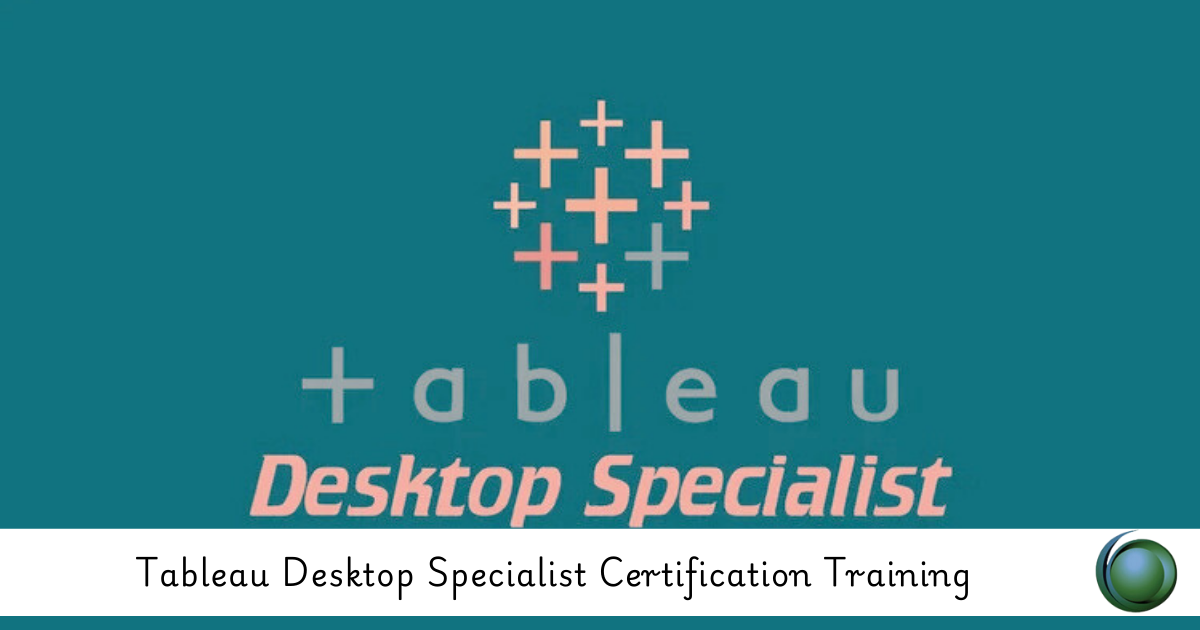Description
Introduction of Tableau Desktop Specialist Certification
The Tableau Desktop Specialist Certification validates foundational skills in Tableau Desktop, focusing on data connections, visualization, and dashboard building. This course provides hands-on training to help participants master the essential Tableau concepts and techniques required for certification. Learners will gain practical experience in creating interactive visualizations, applying calculations, and designing insightful dashboards that drive data-driven decision-making. The course also covers exam preparation strategies, ensuring that participants are ready to achieve certification.
Prerequisites
- Basic understanding of data visualization concepts
- Familiarity with spreadsheets or databases is beneficial but not required
- No prior Tableau experience necessary
Table of Contents
1. Introduction to Tableau Desktop
1.1 Overview of Tableau and its importance in data visualization
1.2 Key features and benefits of using Tableau Desktop
1.3 Understanding the Tableau ecosystem: Tableau Desktop, Server, and Public
1.4 Navigating the Tableau Desktop interface and workspace
1.5 Exploring menus, toolbars, and sheet organization
2. Connecting to Data Sources
2.1 Understanding different types of supported data sources
2.2 Connecting to Excel, databases, and cloud-based data sources
2.3 Understanding live vs. extract connections and their impact on performance
2.4 Performing basic data cleaning and transformation within Tableau(Ref: Tableau Certified Data Analyst: Mastering Data Visualization)
2.5 Using the Data Interpreter for improving raw data quality
3. Data Preparation and Management
3.1 Understanding dimensions and measures
3.2 Working with discrete vs. continuous data
3.3 Renaming, splitting, and merging fields
3.4 Grouping, sorting, and filtering data for analysis
3.5 Creating hierarchies and understanding their role in drill-down analysis
3.6 Using data blending and relationships for multi-source analysis
4. Creating Basic Visualizations
4.1 Introduction to visualization best practices
4.2 Creating bar charts, line charts, and pie charts
4.3 Using scatter plots and bubble charts for trend analysis
4.4 Building dual-axis and combo charts for better insights
4.5 Using maps and geographic visualization for spatial analysis
5. Advanced Visualization Techniques
5.1 Creating heat maps and highlight tables
5.2 Using treemaps for hierarchical data representation
5.3 Advanced mapping techniques with custom geospatial data
5.4 Implementing waterfall and funnel charts
5.5 Creating motion charts and animated visualizations
6. Working with Calculations and Aggregations
6.1 Understanding calculated fields and their applications
6.2 Performing basic and logical calculations
6.3 Using table calculations for advanced data manipulation
6.4 Aggregating data and using different summarization methods
6.5 Understanding level of detail (LOD) expressions and their role in analysis
7. Formatting and Customizing Visualizations
7.1 Adjusting colors, labels, and tooltips for better clarity
7.2 Formatting fonts, borders, and backgrounds
7.3 Using shapes, images, and icons to enhance visualization appeal
7.4 Customizing axis settings, legends, and annotations
7.5 Using reference lines, bands, and distributions for contextual insights
8. Creating Interactive Dashboards
8.1 Designing dashboards with multiple visualizations
8.2 Adding filters, parameters, and interactive elements
8.3 Creating dashboard actions for enhanced user experience
8.4 Implementing drill-down and hierarchy navigation
8.5 Best practices for optimizing dashboard performance
9. Publishing and Sharing Insights
9.1 Exporting workbooks, dashboards, and reports
9.2 Sharing insights on Tableau Server and Tableau Public
9.3 Embedding Tableau visualizations into websites and applications
9.4 Scheduling automated updates for data refresh
9.5 Managing user access and permissions for shared dashboards
10. Tableau Certification Exam Preparation
10.1 Understanding the Tableau Desktop Specialist exam format
10.2 Reviewing exam objectives and key topics
10.3 Hands-on exercises and real-world problem-solving
10.4 Time management strategies for answering exam questions efficiently
10.5 Sample questions, quizzes, and mock exams
11. Real-World Case Studies and Applications
11.1 Building business intelligence reports for sales and marketing teams
11.2 Creating financial dashboards for real-time analytics
11.3 Using Tableau in healthcare for patient data visualization
11.4 Supply chain analytics and logistics optimization
11.5 Customer behavior analysis and trend forecasting
12. Hands-On Projects and Practical Assignments
12.1 Designing an interactive dashboard with real-world data
12.2 Implementing calculated fields and custom aggregations
12.3 Creating geographic visualizations for demographic analysis
12.4 Building predictive models using Tableau features
12.5 Presenting final project insights and recommendations
Conclusion
By completing this training, participants will gain foundational Tableau skills and the confidence to pass the Tableau Desktop Specialist Certification exam. The course provides real-world applications, hands-on projects, and exam-focused training to ensure a comprehensive learning experience. Whether for business intelligence, data visualization, or career advancement, this training prepares individuals to leverage Tableau effectively in their professional roles.







Reviews
There are no reviews yet.